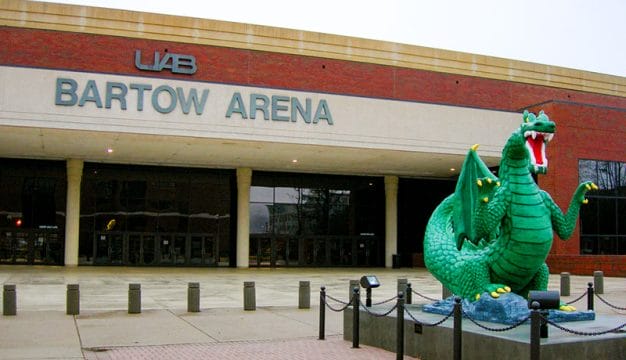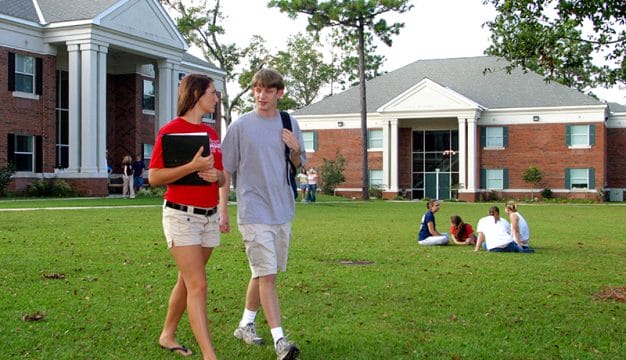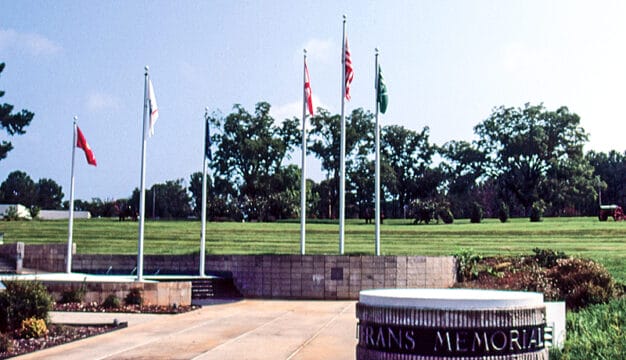Nathan B. Young
Educator Nathan B. Young (1862-1933) was a key proponent of improving academic standards and liberal arts education for blacks during the first decades of the twentieth century. As head of a number of educational facilities, he strove to provide a well-rounded education to both elementary and college-age students. Two important black institutions of higher education, Florida A&M University and Lincoln University, continue to exist and grow as a result of his influence and leadership.
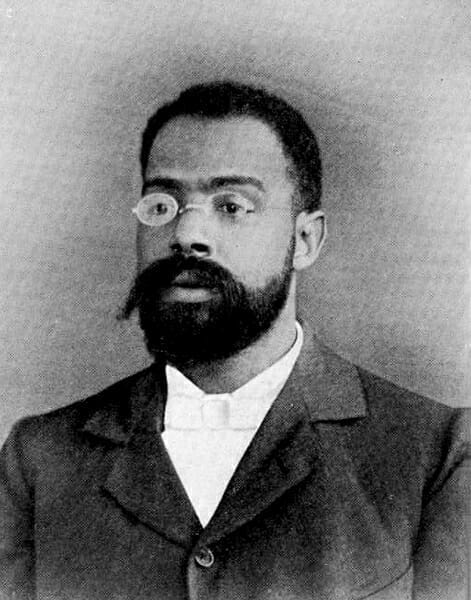 Nathan B. Young
Nathan Benjamin Young was born on September 15, 1862, in Newbern, Hale County, to Susan Smith, an enslaved African American, and a father whose identity is unknown. Smith was born enslaved in Chatham, Virginia, in 1842. Her owner died when she was 12 years old, and in the settlement of his estate she was given the choice of being sold to a local known to abuse the slaves he owned or to a slave trader. Her mother convinced her to go with the slave trader, and in the fall of 1856, Smith and several other slaves were marched from Virginia to Alabama. In Newbern, east of Demopolis, Smith was sold to a cotton planter.
Nathan B. Young
Nathan Benjamin Young was born on September 15, 1862, in Newbern, Hale County, to Susan Smith, an enslaved African American, and a father whose identity is unknown. Smith was born enslaved in Chatham, Virginia, in 1842. Her owner died when she was 12 years old, and in the settlement of his estate she was given the choice of being sold to a local known to abuse the slaves he owned or to a slave trader. Her mother convinced her to go with the slave trader, and in the fall of 1856, Smith and several other slaves were marched from Virginia to Alabama. In Newbern, east of Demopolis, Smith was sold to a cotton planter.
After the Civil War began, Smith, who had since given birth to Nathan, was sold to the plantation overseer. Hoping to dodge the draft, he planned to take Smith and her child to Texas, where he believed slavery would continue to exist. Smith learned of his plan from another slave, however, and began plotting an escape. At the end of the Civil War, when Nathan was three years old, she left the plantation and headed north, settling near Tuscaloosa in her own home and met and married Frank Young. Nathan Young grew up in rural Alabama during Reconstruction and witnessed some of the most violent activities of the Ku Klux Klan in Alabama.
Young’s mother wanted him to receive an education and enrolled him in a small school operated by a white Baptist minister in Tuscaloosa. Nathan spent three months at Stillman Institute (now Stillman College), also in Tuscaloosa, and then enrolled in Talladega College, where he received a classical education in the school’s teacher-training branch. As was the custom of that time, Nathan taught in rural schools during the summer while working toward his teacher’s degree, and his summer employment provided him with the money to return to Talladega in the fall. Nathan also taught in schools in Coaling and Appling, Alabama, and Greenville, Mississippi.
Young was greatly influenced by Talladega College president Henry S. DeForest. Later, Young and DeForest began planning a campaign to bring education to black youths throughout rural Alabama and the South. Upon receiving his diploma from Talladega College in 1884, Young took charge of a secondary school in Jackson, Mississippi. Deciding to make teaching his career, Young resolved to further his education by enrolling at Oberlin College in Ohio. He graduated with a bachelor of arts degree in 1888 and earned a master’s degree in 1891. During this time, he also served as head of a black elementary school in Birmingham.
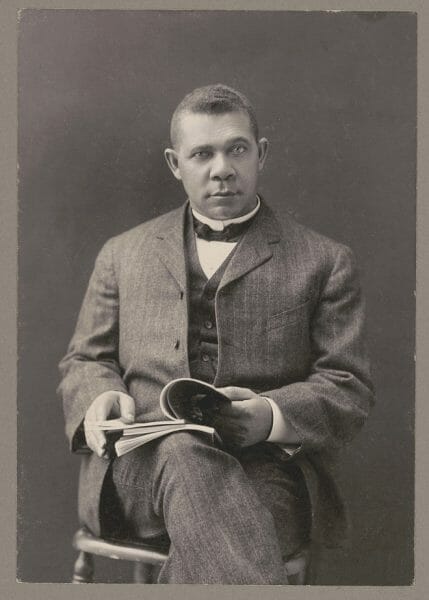 Booker T. Washington
On December 1, 1891, Young married Emma Mae Garette of Selma. They had a son, Nathan B. Young Jr., and a daughter, Gareth. Emma Young died in 1904 in Tallahassee, Florida, and in 1908, Young married Margaret Buckley, originally from Charleston, South Carolina. They had two sons, William and Frank DeForrest, and one daughter, Julia. In 1892, Young was hired by Booker T. Washington to teach at Tuskegee Institute. He stayed at Tuskegee for five years, mainly serving as the head of academics. Young increasingly came into conflict with Washington over the latter’s demands to stress the vocational aspects of all the academic courses, including math and English. In 1897, Young left Tuskegee and took a position as director of teacher training at Georgia State Industrial College for Colored Youths (now Savannah State University). He worked well with the school’s first president Richard R. Wright Sr., but he became somewhat disillusioned by the efforts of white southerners serving on the school’s board of directors to limit black education to agriculture and the trades.
Booker T. Washington
On December 1, 1891, Young married Emma Mae Garette of Selma. They had a son, Nathan B. Young Jr., and a daughter, Gareth. Emma Young died in 1904 in Tallahassee, Florida, and in 1908, Young married Margaret Buckley, originally from Charleston, South Carolina. They had two sons, William and Frank DeForrest, and one daughter, Julia. In 1892, Young was hired by Booker T. Washington to teach at Tuskegee Institute. He stayed at Tuskegee for five years, mainly serving as the head of academics. Young increasingly came into conflict with Washington over the latter’s demands to stress the vocational aspects of all the academic courses, including math and English. In 1897, Young left Tuskegee and took a position as director of teacher training at Georgia State Industrial College for Colored Youths (now Savannah State University). He worked well with the school’s first president Richard R. Wright Sr., but he became somewhat disillusioned by the efforts of white southerners serving on the school’s board of directors to limit black education to agriculture and the trades.
In 1897, Young was named the fourth president of the Alabama State Teachers Association for Negroes and gave an address at its annual conference entitled “Common School Extension,” in which he spoke of the need to make primary education available to rural black youth in Alabama. In 1901, Young became president of Florida A&M College in Tallahassee, where he tried to balance the agricultural and vocational education program with coursework in the liberal arts. After World War I, however, white state officials became intolerant of teaching liberal arts to black youths and forced Young out in 1923.
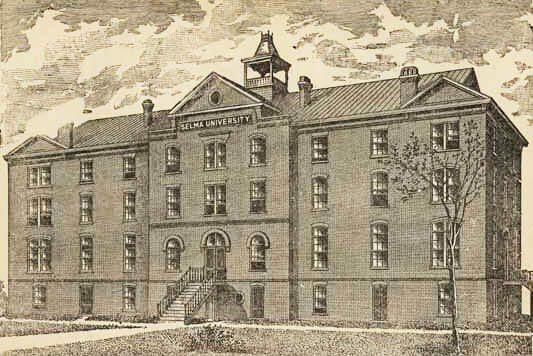 Selma University
Young next accepted the presidency of Lincoln University in Missouri. In a remarkably short time, he successfully campaigned to raise academic standards and to earn accreditation for the school’s high school and teacher-training programs from the North Central Association of Colleges and Secondary Schools. By 1927, white Missouri political leaders, including the Republican governor, had forced Young out of the presidency because of his continued efforts to steer the school’s curriculum away from vocational and industrial education. From 1927 to 1928, Young served as the state inspector of black schools, and in the 1928 gubernatorial election the future of Lincoln University was made a campaign issue by the black press. Young was reinstated as president in 1929, but politics again entered the picture, and he was forced out a second time in 1931. Young then earned a living by lecturing throughout the South and selling books for two educational associations, and Talladega College and Selma University both awarded Young honorary Doctor of Letters degrees. In early 1933, he moved in with his daughter in Tampa, Florida, where he died on July 19.
Selma University
Young next accepted the presidency of Lincoln University in Missouri. In a remarkably short time, he successfully campaigned to raise academic standards and to earn accreditation for the school’s high school and teacher-training programs from the North Central Association of Colleges and Secondary Schools. By 1927, white Missouri political leaders, including the Republican governor, had forced Young out of the presidency because of his continued efforts to steer the school’s curriculum away from vocational and industrial education. From 1927 to 1928, Young served as the state inspector of black schools, and in the 1928 gubernatorial election the future of Lincoln University was made a campaign issue by the black press. Young was reinstated as president in 1929, but politics again entered the picture, and he was forced out a second time in 1931. Young then earned a living by lecturing throughout the South and selling books for two educational associations, and Talladega College and Selma University both awarded Young honorary Doctor of Letters degrees. In early 1933, he moved in with his daughter in Tampa, Florida, where he died on July 19.
Additional Resources
Holland, Antonio F. Nathan B. Young and the Struggle over Black Higher Education. Columbia, Mo.: University of Missouri Press, 2006.
